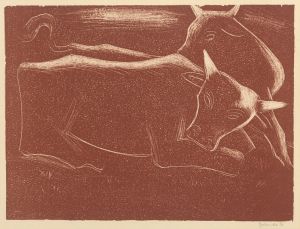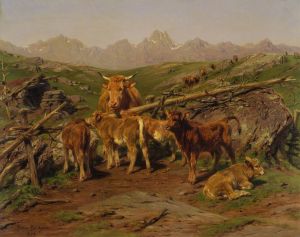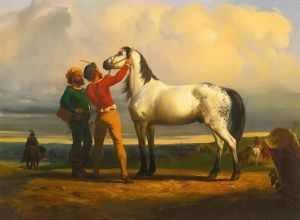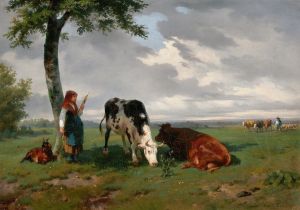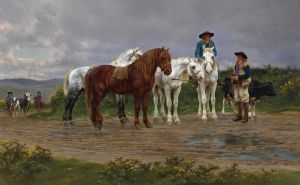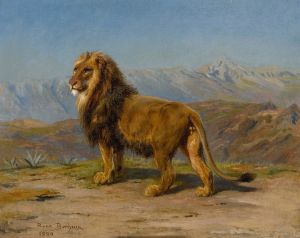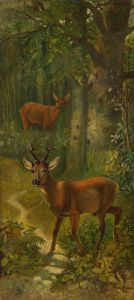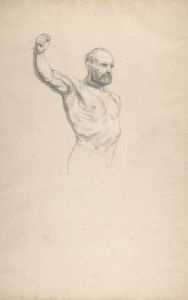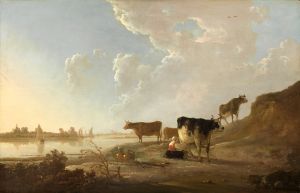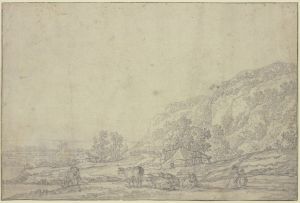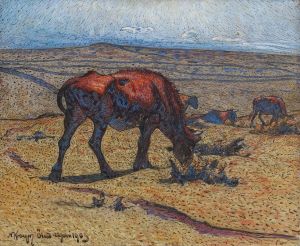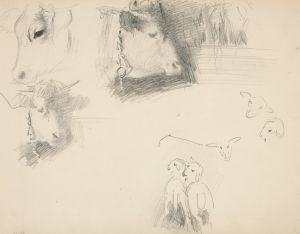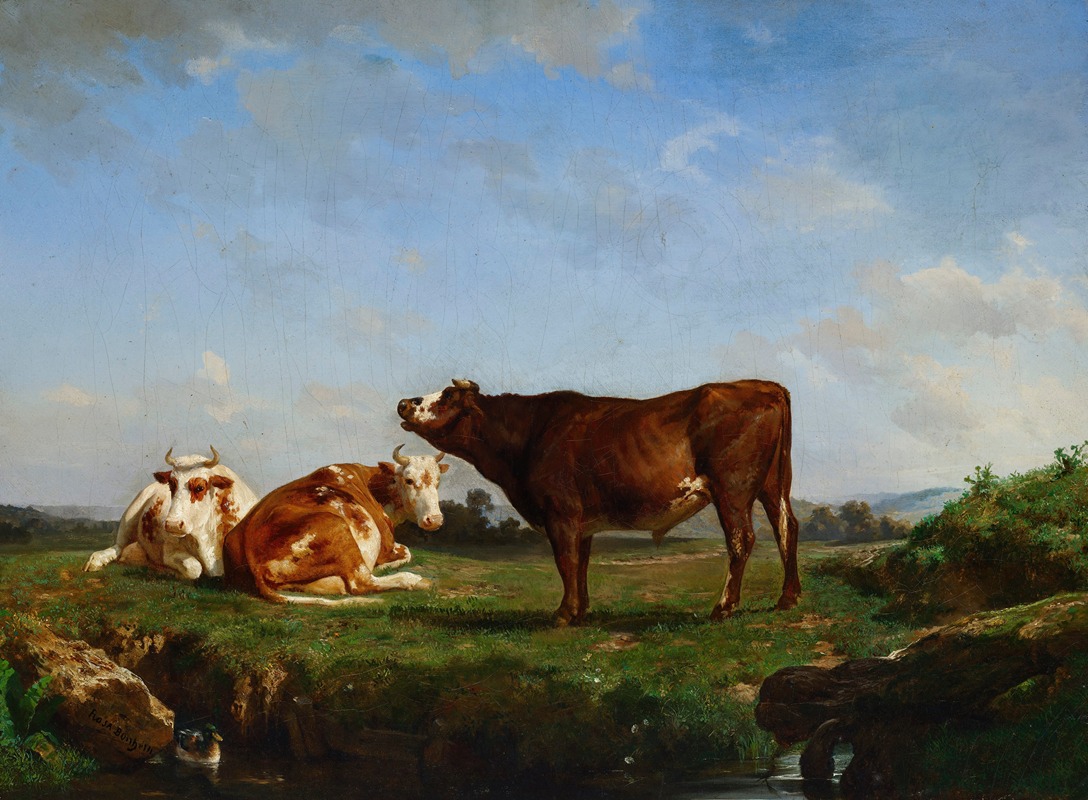
Trois vaches au pâturage
A hand-painted replica of Rosa Bonheur’s masterpiece Trois vaches au pâturage, meticulously crafted by professional artists to capture the true essence of the original. Each piece is created with museum-quality canvas and rare mineral pigments, carefully painted by experienced artists with delicate brushstrokes and rich, layered colors to perfectly recreate the texture of the original artwork. Unlike machine-printed reproductions, this hand-painted version brings the painting to life, infused with the artist’s emotions and skill in every stroke. Whether for personal collection or home decoration, it instantly elevates the artistic atmosphere of any space.
Rosa Bonheur, a renowned 19th-century French artist, is celebrated for her realistic depictions of animals and rural scenes. Among her notable works is "Trois vaches au pâturage" (Three Cows in a Pasture), which exemplifies her skill in capturing the essence of pastoral life and the natural world. Although specific details about this particular painting are limited, Bonheur's broader body of work provides context for understanding her artistic approach and significance.
Rosa Bonheur was born on March 16, 1822, in Bordeaux, France, into a family of artists. Her father, Oscar-Raymond Bonheur, was a landscape and portrait painter who encouraged her artistic pursuits from a young age. Bonheur's upbringing in an artistic environment, combined with her keen interest in animals and nature, significantly influenced her career. She became one of the most successful female artists of her time, breaking barriers in a male-dominated field.
Bonheur's dedication to realism and her meticulous attention to detail are evident in her paintings. She often conducted extensive studies of her subjects, visiting farms, slaughterhouses, and even dressing in men's clothing to gain access to places where women were typically not allowed. This commitment to authenticity is reflected in her works, which are characterized by their lifelike representation of animals and their environments.
"Trois vaches au pâturage" likely showcases Bonheur's ability to portray the serene and harmonious relationship between animals and their natural surroundings. While specific information about the painting's creation date or current location is not readily available, it can be inferred that the work aligns with Bonheur's broader thematic focus on rural life and animal subjects. Her paintings often depict scenes of grazing animals, capturing the tranquility and simplicity of pastoral settings.
Bonheur's most famous work, "The Horse Fair" (1853-1855), exemplifies her mastery of animal painting and her ability to convey movement and vitality. This large-scale painting, which depicts a bustling horse market in Paris, brought her international acclaim and solidified her reputation as a leading animal painter. "Trois vaches au pâturage," while less well-known, likely shares the same attention to anatomical accuracy and dynamic composition that characterizes her celebrated pieces.
Throughout her career, Bonheur received numerous accolades and honors, including the prestigious Legion of Honor in 1865, making her the first female artist to receive such recognition. Her success paved the way for future generations of women artists, challenging societal norms and expanding opportunities for women in the arts.
In summary, "Trois vaches au pâturage" by Rosa Bonheur is a testament to her exceptional ability to depict animals with realism and sensitivity. Although specific details about this painting are scarce, it is representative of Bonheur's broader oeuvre, which celebrates the beauty and tranquility of rural life. Her legacy as a pioneering female artist and her contributions to the genre of animal painting continue to be celebrated and studied by art enthusiasts and scholars worldwide.






